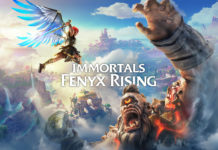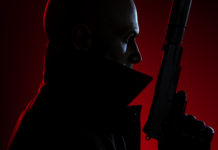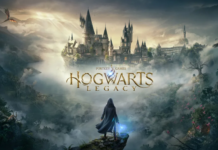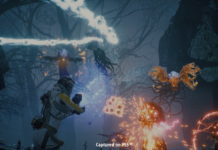March 7, 2010
Better Horror Than Hollywood
By: Stefanie Fogel
When was the last time you saw a
really good horror movie? The kind that oozes atmosphere in every frame. The
kind that makes you jump in your seat and leaves you with a sudden urge to sleep
with the lights on. For me, that movie was 2002’s The Ring. After seeing that
film, I’ll never look at television static and pale, black-haired children the
same way again. But, since then, it seems that Hollywood has come to rely less
and less on suspense and more on cheap shock tactics and gore, leaving me to
realize that the best modern horror can no longer be found on the silver screen.
It’s on a gaming console.
Video games have much in common with
movies when it comes to scare tactics. Both rely heavily on music and sound
effects to create suspense and atmosphere. EA Redwood Shores’ 2008 sci-fi horror
gem Dead Space is a prime example, taking home awards for Audio of the Year and
Sound Design of the Year at the seventh annual Game Audio Network Guild Awards.
And, as anyone who’s played the game can tell you, those awards are richly
deserved. From the disturbing audio logs of the U.S.S. Ishimura’s crew to the
skittering sounds of necromorphs in the ventilation ducts above your head, every
sound effect in the game has been designed precisely with the sole purpose of
scaring your pants off.
"You can’t rush it," says Dead Space
producer Steve Papoutsis in a developer video. "You can’t have things step on
top of each other. You can’t have voice over playing when you want to scare
somebody. You really need to bring the players attention to a specific thing and
then have that timing play into the event that’s going to occur."
"When we’re trying to grab the
players attention and make them look at a scripted event, we use a couple of
different tricks," adds producer Rich Briggs. "One of them is an audio stinger.
An audio stinger is, basically, that little ding that you hear in a horror movie
when the cat runs across the camera and nothing really bad happens."
Perhaps the most disturbing
"stinger" moment in Dead Space comes early in the game. As you walk down a
hallway, you hear a banging noise up ahead. Drawing closer, you realize it is a
member of the Ishimura’s crew banging his head against a wall. Just when you’re
about to reach him, he rears back and slams his head one final time. With a
sickening crack, he slowly slides to the ground, leaving a long trail of blood
down the wall. It is a carefully crafted moment that manages to unnerve you
without requiring you to fire a single shot. View the scene with the volume
turned down, however, and it doesn’t have the same impact.
Lighting is another key element used
by both filmmakers and game developers when creating effective horror. In 1980,
two simple sentences taught gamers to be afraid of the dark. "It is pitch black.
You are likely to be eaten by a grue." Infocom’s classic text-based adventure
Zork was one of the first games to use lighting as a source of tension. The
rusty lantern your character carries into the underground world beneath the
white house doesn’t die suddenly. It slowly dims over time, causing the player
to frantically search for a new light source before he is devoured by the
monster waiting in the dark.
Although technology has come a long
way since the days of Zork, developers are still trying to create that same
primal fear of the dark. The ubiquitous flashlight has replaced the rusty
lantern, and techniques such as deferred lighting – where light sources are
dynamic and rendered in real time – add a touch of realism that make games more
immersive, more spooky. More like a movie.
Despite their similarities, though,
there is one thing video games have that horror films don’t: interaction. It’s
one thing to watch a movie and yell, "Don’t go in there!" to the doomed heroine
on the screen. It’s another to actually be the heroine on the screen and know
that you have to go in there if you want to continue playing the game. This
creates a sense of dread that can’t be matched in a theater. A moviegoer is a
passive observer of the horrors being played out in front of them. A gamer is an
active participant. Death in film is scripted, choreographed, while death in a
video game can come at any time, whether it’s from an environmental obstacle, a
random encounter with a monster, or a boss fight. In this way, even the oldest
of Hollywood horror cliches can become scary again. Being chased by a
chainsaw-wielding maniac has a whole new meaning when you have a game controller
in your hands and not a tub of popcorn.
Consumers seem to agree. According
to Reuters, Wedbush Morgan Securities analyst Michael Pachter states that $147
million in horror video games were sold in the U.S. between January and
September of last year. Only $131 million in games were sold throughout all of
2008. And, with an A-list lineup that includes such titles as Heavy Rain, Alan
Wake and Dead Space 2, sales in 2010 could climb even higher as horror fans
everywhere have new reasons to play… with the lights on.










